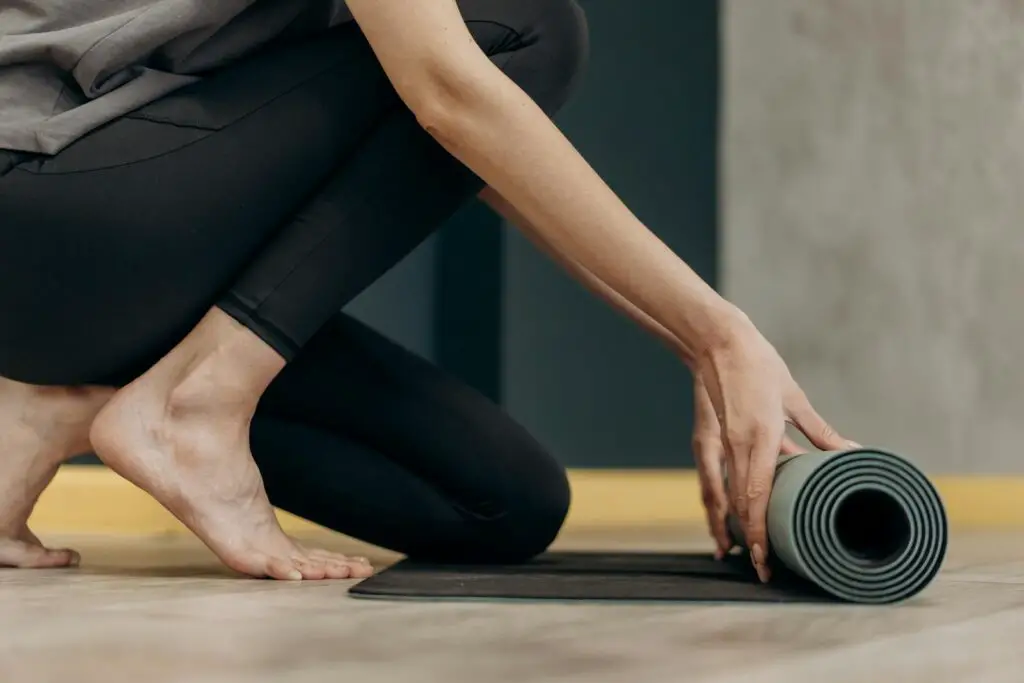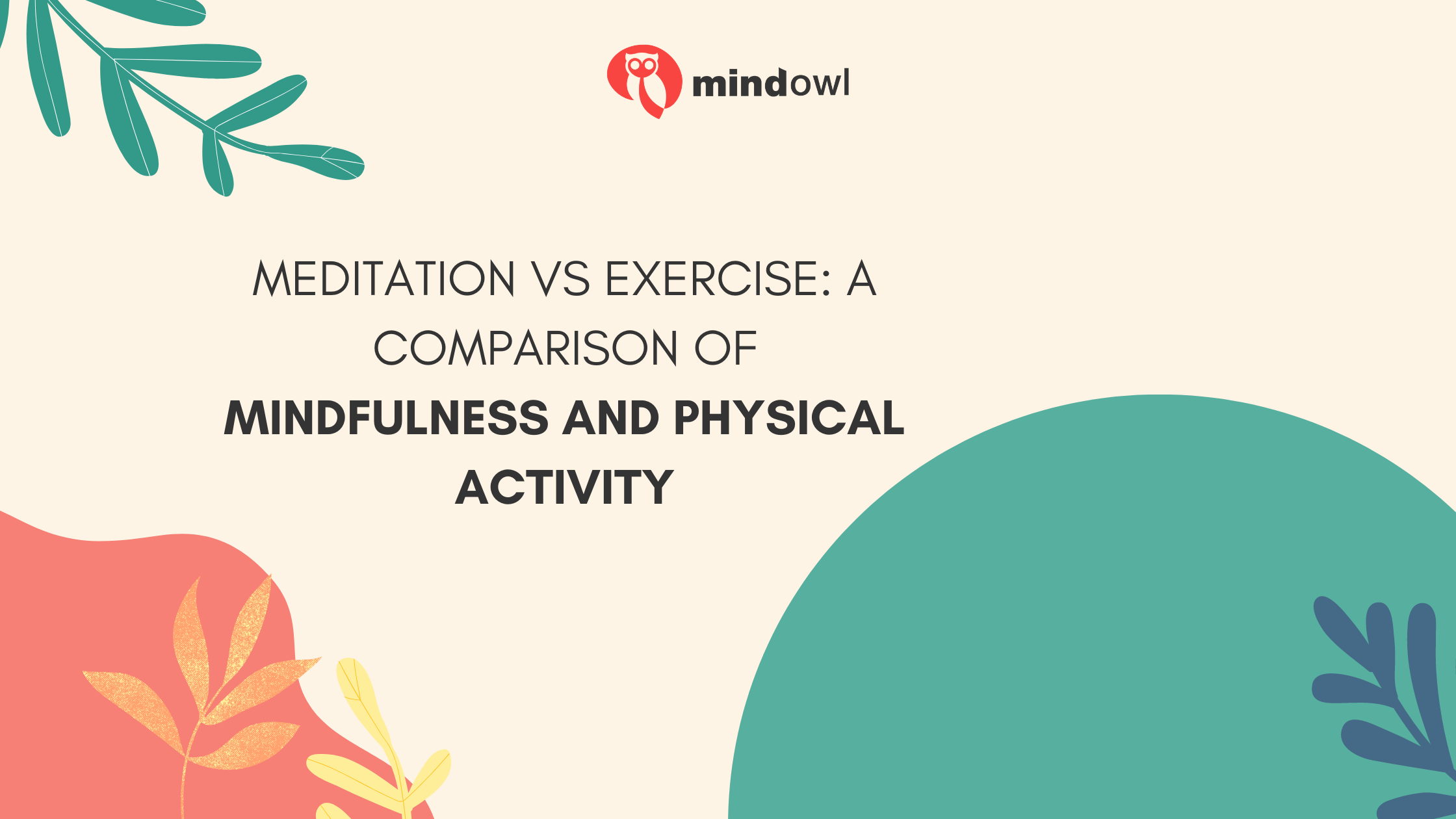In the hustle and bustle of daily life, finding peace and keeping fit can seem like a tall order. You’re not alone if you’ve ever felt torn between sitting down to calm your mind or lacing up your trainers for a sweat session.
Here’s something interesting: research shows that both calming practices and physical workouts have unique benefits for our health.
This blog will dive into how sitting quietly in contemplation compares with moving around for fitness. We’ll look at what each does for our mind, body, and overall happiness. Plus, we’ll explore why doing both might just be the best recipe for feeling great inside out.
Ready to find out more? Keep reading!
Key Takeaways
- Meditation focuses on calming the mind while exercise strengthens the body, both contributing to mindfulness and overall health.
- Doing both meditation and physical activity can reduce stress, improve mental health, boost focus, and increase vitality.
- Mindfulness during exercise helps with better form and fewer injuries, enhancing physical performance.
- Practices like mindful movement combine the benefits of meditation and exercise for greater health outcomes.
- Regularly mixing meditation with workouts can lead to improved psychological well-being and support in achieving fitness goals.

Understanding Meditation and Exercise
Meditation involves focusing the mind to achieve a calm and clear state, promoting relaxation and mindfulness. Physical exercise encompasses various activities aimed at improving strength, flexibility, and overall fitness.
The Practice of Meditation
People practice meditation to find calm and improve their well-being. They sit or lie quietly, focusing on their breathing or a single thought. This helps clear the mind from daily noise and stress.
Regular sessions of this mental exercise can lead to better focus and a peaceful state of mind.
Practising meditation has shown positive effects on both mental and physical health. Studies link it with changes in the brain that enhance how we process thoughts and emotions. It trains the brain to be more mindful, helping us deal with life’s ups and downs more easily.
People who meditate regularly often report feeling less anxious and more contented with life.
The Role of Exercise
Exercise plays a huge part in keeping your body and mind healthy. It’s not just about building muscle or losing weight. When you move your body, chemicals like endorphins are released into your brain, leading to feelings of happiness and reducing stress.
Regular physical activity boosts heart health and prevents lifestyle-related diseases, making it a powerful tool for improving overall well-being.
Daily workouts can also have an impact on resilience against daily stressors and enhance the quality of life. Techniques such as yoga or aerobic sessions bring numerous advantages including better sleep patterns, enhanced mood, and increased energy levels.
Including consistent exercise in one’s routine is crucial for maintaining both mental serenity and physical fitness over time.
Comparing Meditation and Exercise in Mindfulness
Let’s dive straight into comparing meditation and exercise in mindfulness. Both are pillars of well-being, but they serve different parts of our mental and physical health. Check out the table below to see how they stack up against each other.
| Meditation | Exercise |
|---|---|
| Focuses on the mind | Targets the body |
| Improves concentration | Increases endurance |
| Reduces stress | Enhances physical fitness |
| Can be done anywhere | Often requires a specific place, like a gym or park |
| Uses techniques like breathing and visualisation | Includes activities like running, cycling, or weightlifting |
| Has a direct impact on mindfulness | Can indirectly support mindfulness through the release of endorphins |
Meditation and exercise both play vital roles in maintaining our health. One calms the mind, the other strengthens the body. They may seem different, but they both support mindfulness in their own ways. Meditation brings direct benefits to our mental well-being. It helps us focus and reduces stress. On the flip side, exercise works more on the physical side. It makes us fitter and indirectly supports our mental health by making us feel happier and more relaxed, thanks to those endorphins.
Both activities encourage us to stay present and mindful. So, they’re both important. Think of them as two sides of the same coin. They complement each other. While one calms the mind, the other energises the body. Together, they create a balance. This balance is key to a healthy life.
The Impact of Meditation and Exercise on Physical Activity
Meditation and physical workouts both play a crucial role in boosting physical activity. They achieve this through different pathways. Mindfulness sessions help lower stress markers, making it easier for the body to engage in more strenuous activities without feeling overwhelmed.
On the other hand, regular exercise strengthens the body, increases stamina, and improves overall fitness levels.
Mindful movement combines these benefits, offering additional psychological pluses beyond what one gets from meditation or aerobic exercises alone. This approach leads to decreased physiological signs of stress and heightened mental well-being.
Engaging in both practices might be the key to unlocking greater health outcomes and achieving fitness goals more efficiently.

The Interplay between Meditation, Exercise and Mental Health
Exploring how mindfulness practices, physical activities, and mental well-being connect reveals a fascinating dynamic. Mindfulness exercises such as sitting quietly and focusing on breath or engaging in slow meditative movements can calm the mind.
This leads to a reduction in stress levels. On the other hand, vigorous activities like running or cycling boost endorphins—nature’s feel-good chemicals—that enhance mood and energy levels.
The ongoing study into this relationship has uncovered that both quiet reflection and active exercise have their unique ways of fighting anxiety and depression. Regularly setting aside time for these activities not only lowers stress hormones like cortisol but also improves overall psychological health.
This synergy suggests that blending mindful sessions with physical routines could be a powerful method for ensuring balanced mental wellness.
The Benefits of Combining Meditation and Exercise
Combining meditation and exercise boosts your well-being. It makes you feel stronger in both mind and body. Here’s how:
- Improves Focus – Focusing gets easier with this mix. Exercise fills you up with energy while meditation clears your mind.
- Reduces Stress – Feeling stressed? This combo works wonders. Exercise fights stress by releasing endorphins, and meditation calms your thoughts.
- Enhances Physical Performance – Want to hit those fitness goals? Adding meditation to your routine can really help. It sharpens the mind for better physical performance.
- Boosts Mental Health – Together, exercise and meditation can lift your mood and keep anxiety at bay, making you feel happier on the inside.
- Increases Vitality – Research suggests that this mighty duo can pump up your vitality, leaving you with more energy every day.
- Mindful Workouts – When you’re mindful during workouts, you pay better attention to form and breathing. This leads to fewer injuries and a deeper connection with your body.
- Better Recovery – Combining these practices helps in recovery too. They relax the muscles and ease the mind, helping you bounce back faster from tough workouts.
- Cultivates Inner Peace – Keen on finding inner peace? Exercise burns off tension while meditation teaches contentment, together fostering a peaceful state of being.
- Enhances Body Awareness – Getting to know your body is key for any fitness journey. Meditation heightens this awareness while exercise strengthens it physically.
- Supports Mental Functions – The blend of physical activity with mindfulness training keeps your brain sharp, supporting functions like memory and attention.
Conclusion
Meditation and physical workouts both shine in their ways. They make our minds and bodies stronger. Mixing these activities could give even better results for feeling good inside out.
You don’t have to choose one over the other. Try a bit of both and see how you feel! They might just be the perfect duo for your health journey.
FAQs
1. What’s the difference between meditation and exercise?
Meditation focuses on achieving a meditative state of mind to reduce stress and improve mental well-being, whereas physical exercise involves body movements to boost health and fitness.
2. Can both meditation and exercise reduce stress?
Yes, indeed! Both practices have shown in randomised controlled trials to effectively lower perceived stress, with meditation improving mindfulness and exercise strengthening the body.
3. Are there benefits to combining meditation with physical activity?
Absolutely – combining forms of meditation with regular physical activity can enhance both your mental clarity and physical health, offering a holistic approach to reducing anxiety and boosting wellbeing.
4. How do the effects of mindfulness meditation compare to intense exercise on mood?
Mindfulness-based stress reduction from meditation can deeply calm the mind, while intense exercises release endorphins that elevate mood. Each has unique benefits for managing negative emotions and promoting happiness.
5. Do scientific studies support the benefits of meditation over exercise or vice versa?
Numerous clinical trials have explored this question, revealing that both activities offer significant but different advantages for mental disorder prevention, cognition enhancement, and overall health promotion.
6. Is one better than the other for dealing with stressful life events?
It depends on personal preference; some may find mindful practices like mediation more effective in cultivating peace during tough times, while others might lean towards physical exertion as an outlet for releasing tension.
MindOwl Founder – My own struggles in life have led me to this path of understanding the human condition. I graduated with a bachelor’s degree in philosophy before completing a master’s degree in psychology at Regent’s University London. I then completed a postgraduate diploma in philosophical counselling before being trained in ACT (Acceptance and commitment therapy).
I’ve spent the last eight years studying the encounter of meditative practices with modern psychology.

